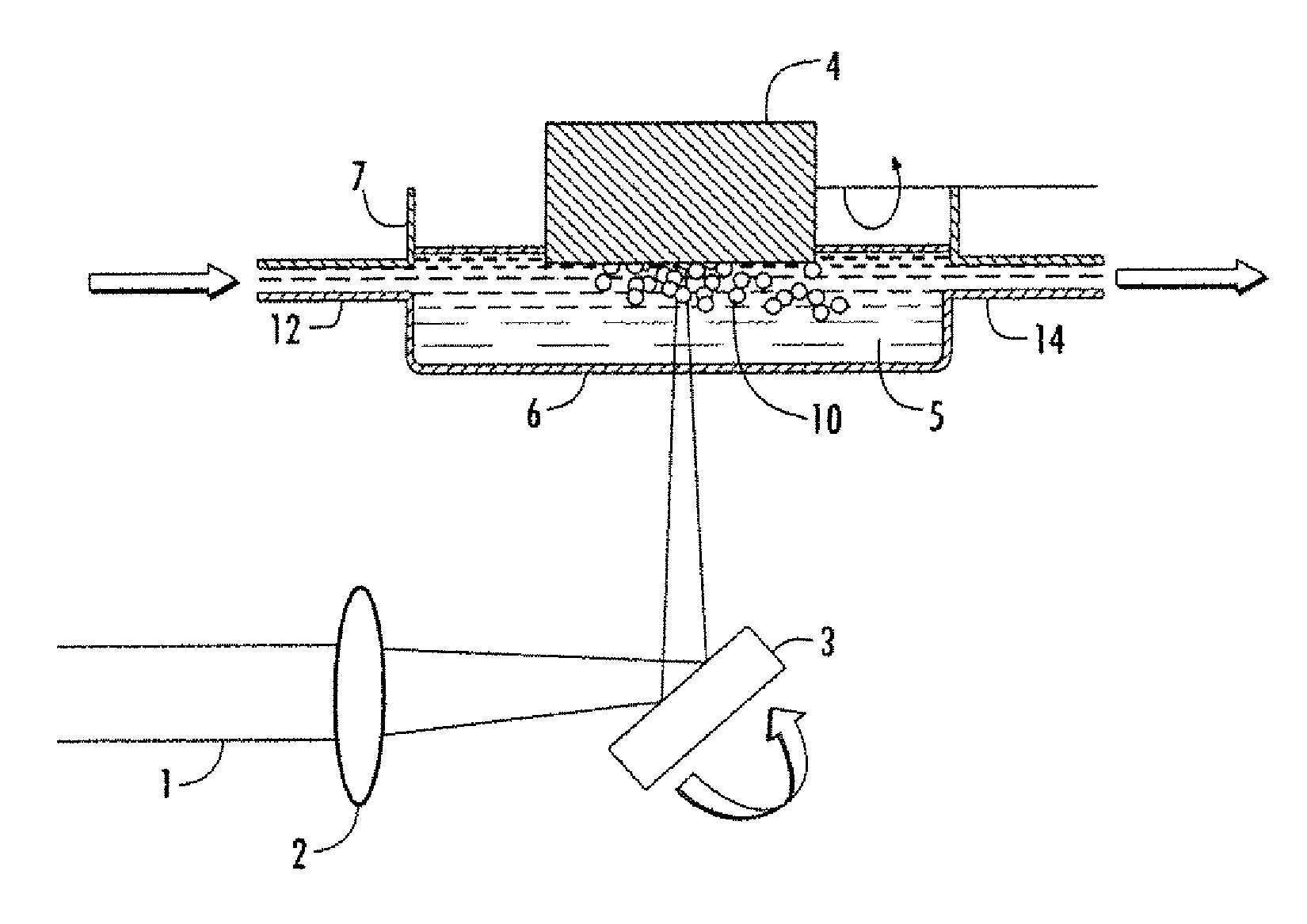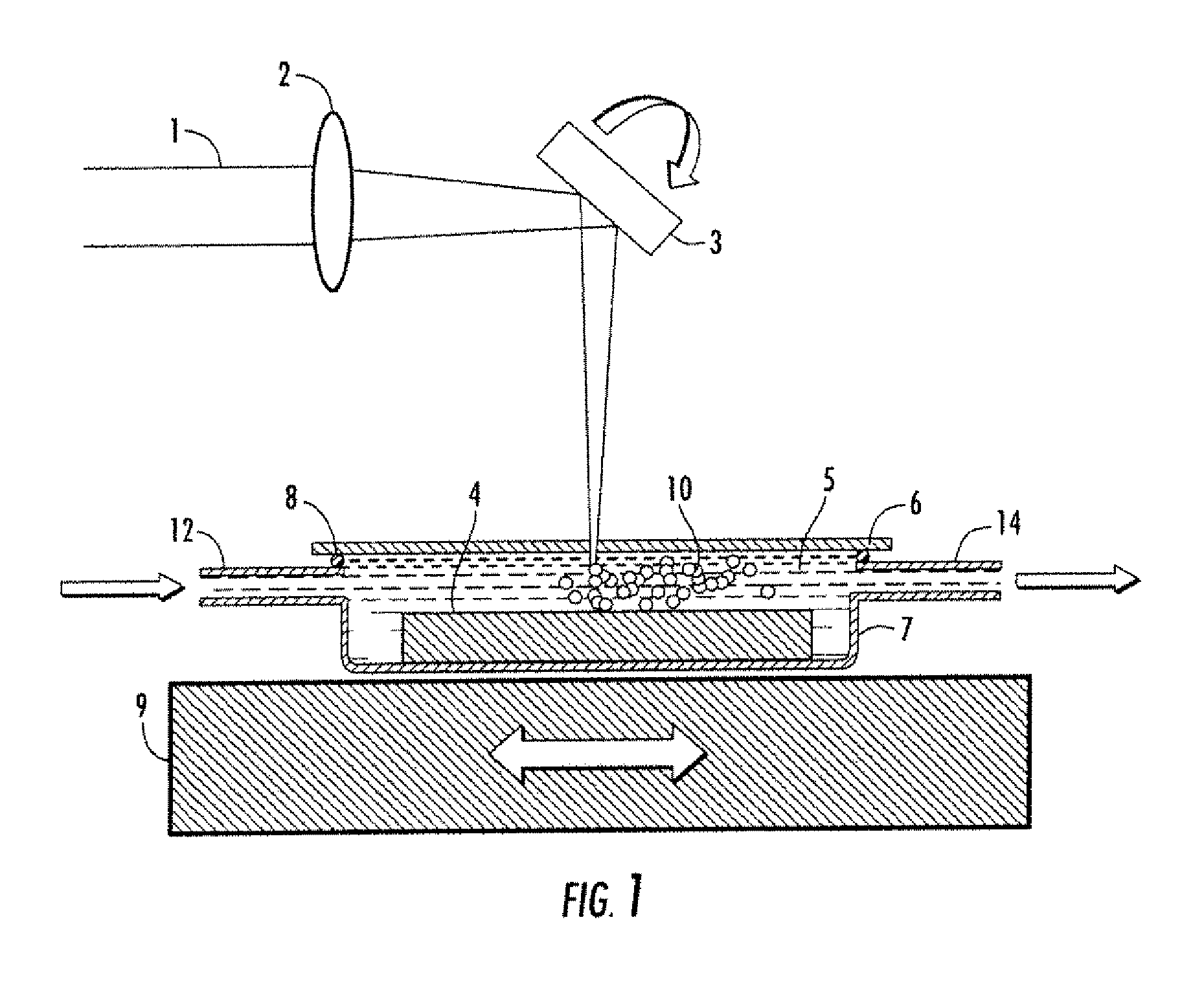Production of organic compound nanoparticles with high repetition rate ultrafast pulsed laser ablation in liquids
a technology organic compound, which is applied in the field of ultrafast pulsed laser ablation, can solve the problems of limiting the effective bioavailability of many systems, curcumin is not water soluble, and not all solid organic compounds can be dissolved in water with reasonable solubility, and achieves high production rate, high repetition rate ultrafast, and high efficiency
- Summary
- Abstract
- Description
- Claims
- Application Information
AI Technical Summary
Benefits of technology
Problems solved by technology
Method used
Image
Examples
Embodiment Construction
[0017]The present invention is directed toward a laser system for producing stable nanoparticle colloidal suspensions from organic materials using an ultrafast pulsed laser ablation process.
[0018]FIG. 1 schematically illustrates a laser-based system for producing organic nanoparticles in a liquid in accordance with the present invention. In one embodiment a laser beam 1 is received from a ultrafast pulse source, not shown, and focused by a lens 2. The source of the laser beam 1 can be any suitable ultrafast pulsed laser source capable of providing a pulse duration, repetition rate and / or power level as discussed below. The focused laser beam 1 then passes from the lens 2 to a guide mechanism 3 for controlling movement of the laser beam 1. The guide mechanism 3 can be any of those known in the art including, by way of example only, piezo-mirrors, acousto-optic deflectors, rotating polygons, vibrating mirror, and prisms. Preferably the guide mechanism 3 is a vibrating mirror 3 to enab...
PUM
| Property | Measurement | Unit |
|---|---|---|
| wavelength | aaaaa | aaaaa |
| wavelength | aaaaa | aaaaa |
| diameter | aaaaa | aaaaa |
Abstract
Description
Claims
Application Information
 Login to View More
Login to View More - R&D
- Intellectual Property
- Life Sciences
- Materials
- Tech Scout
- Unparalleled Data Quality
- Higher Quality Content
- 60% Fewer Hallucinations
Browse by: Latest US Patents, China's latest patents, Technical Efficacy Thesaurus, Application Domain, Technology Topic, Popular Technical Reports.
© 2025 PatSnap. All rights reserved.Legal|Privacy policy|Modern Slavery Act Transparency Statement|Sitemap|About US| Contact US: help@patsnap.com



